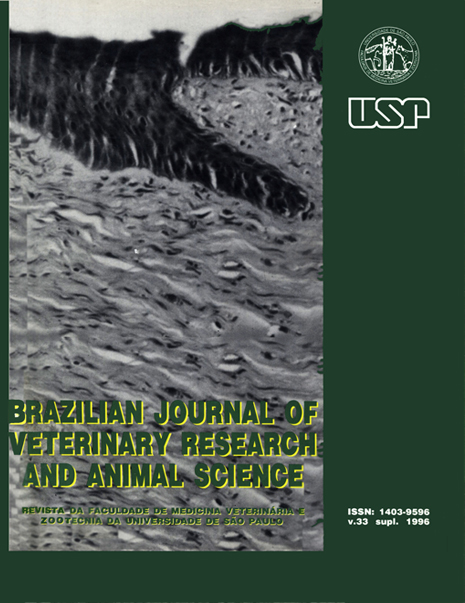Electrocardiographic study of the anesthetic combination of ketamine and chlorpromazine HCL in felines
DOI:
https://doi.org/10.11606/issn.2318-3659.v33isupl.p313-316Keywords:
Ketamine, Chlorpromazine, Felidae, Electrocardiography.Abstract
Ketamine HCL has frequently been used in clinical and surgical practice because of the easy acquisition, applicationand safety of the anesthesia it provides. The objective of the present experiment was to observe possibleinterferences with the electrocardiographic tracing of cats submitted to the ketamine+chlorpromazine combination. The study was conducted in 10 adult cats of both sexes considered as clinically normal and provided by the animal house of the Veterinary Hospital, Faculty of Agrarian and Veterinary Sciences, campus of Jaboticabal-UNESP. Each animal received ketamine HCL at the dose of 15 mg/kg, in combination with 1 mg/kg chlorpromazine HCL, diluted in the same syringe and applied intramuscularly. The animals were then evaluated for heart and respiratory rates and rectal temperature. Electrocardiographic evaluation (ECG) was performed in the leads of the limbs, at a speed of 50 mm/s and with calibration of 1mv = 2cm, for a period of 60 minutes. Only rectal temperature, heart rate and P-R interval of the ECG presented significant differences at the different times observed. The methodology used permits us to conclude that ketamine in combination with chlorpromazine can be safety used in cats.
Downloads
Download data is not yet available.
Downloads
Published
1996-12-03
Issue
Section
ANIMAL PATHOLOGY
License
The journal content is authorized under the Creative Commons BY-NC-SA license (summary of the license: https://
How to Cite
1.
Nunes N, Camacho AA, Kronka S do N, Costa JLO. Electrocardiographic study of the anesthetic combination of ketamine and chlorpromazine HCL in felines. Braz. J. Vet. Res. Anim. Sci. [Internet]. 1996 Dec. 3 [cited 2024 Apr. 23];33(supl.):313-6. Available from: https://www.revistas.usp.br/bjvras/article/view/50218





